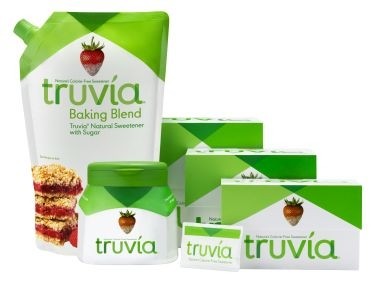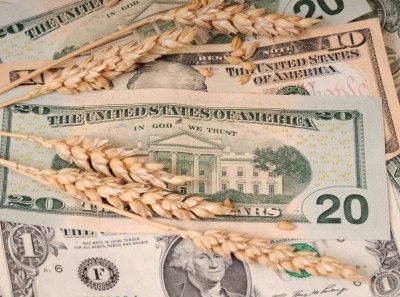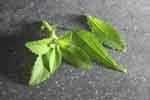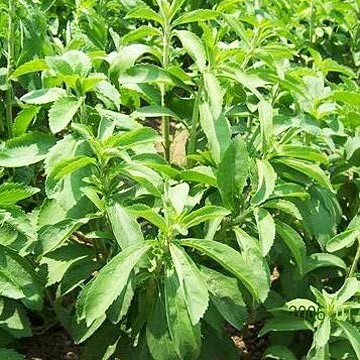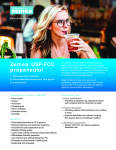Cargill launches pan-European roll-out of Truvia as EC gives stevia the green light

Zanna McFerson, vice president and business director of Truvia, told FoodNavigator-USA that the first tabletop sweeteners made with Truvia – a high intensity sweetener from the stevia leaf - would hit shelves in some EU markets before Christmas.
Exclusive distribution deals
Rather than supply European retailers with its consumer products directly, Cargill has struck exclusive distribution deals with leading sugar producers in Spain (Azucarera), the UK and Ireland (Silver Spoon), France (CristalCo) and Italy (Eridania), said McFerson.
“We are not a supplier of consumer products in Europe and trying to establish ourselves as one from scratch would be some feat. So it made perfect sense for us to work with companies that already have a sales and distribution network and relationships with key retailers in the sweeteners space.”
Under the agreements, the Truvia logo and the partner logo (eg. Silver Spoon etc) will appear jointly on product packaging. The products – which are manufactured and packaged in the US - will be introduced in cartons of 40 and 60 single-serve 1.5g sachets and 270g jars, she said.
“All of the major retailers are very eager to get these products on the shelf so we expect to start rolling out products from early December.”
Ready to launch
Meanwhile, several European food and beverage manufacturers have just been waiting for the EC to give the regulatory thumbs up to steviol glycosides before ‘pushing the button’ with new launches containing Cargill's Truvia stevia leaf extract, she said.
“We’ve been in the approval process for about three years so a lot of work has already been done [in Europe]. We’ll see several products launch in the next few months and I expect some will launch before Christmas.”
From beverages to dairy, cereals
Truvia stevia leaf extract is now used in 55 products sold in nine countries – including Glaceau VitaminWater Zero, Kraft Crystal Light Pure, Minute Maid Premium Pomegranate Tea, YoCrunch 100 Calorie Packs and the Nimble nutrition bar - with several new launches scheduled over the coming months in the US, she said.
“We’ve had great success in beverages but we are also starting to move into a lot more food products such as cereals and dairy.”
While some stevia-based sweeteners were criticized for a bitter, licorice-like aftertaste when they were first approved in the US market in late 2008, formulations had improved considerably since then, said McFerson.
“We’ve done 28,000 hours of application work on Truvia developing the right way to use it in a variety of different recipes. It also has significant advantages over some other sweeteners as it is possible to bake with it and use it across a wide pH range."
Truvia tabletop sweetener now has 13% of US sugar substitute market
Truvia is now the number two sugar substitute in the US behind Splenda with a 13% market share (Nielsen Food/Drug/Mass+Wal-Mart, four weeks to October 1), ahead of Equal (aspartame) and Sweet’N Low (saccharin).
After less than three years on the US market, Truvia has already “fundamentally changed the sweetener category and contributed to the growth of a previously stagnant retail segment”, which had grown 18% in three years, claimed McFerson.
While there were other stevia-based tabletop sweeteners on the market, they were all bulked out with different ingredients and did not taste the same, she said.
The Truvia table top product, which combines stevia leaf extract and zero calorie sweetener erythritol, was more expensive than some other products but had a favorable taste profile, she claimed. “Erythritol perfectly compliments the stevia.”
Regulatory approval process
Zero-calorie steviol glycosides, which are between 40 and 300 times sweeter than sucrose, are derived from the Stevia rebaudiana plant - also known as sweetleaf or sugarleaf - native to Central and South America.
The European Food Safety Authority (EFSA) gave a positive safety opinion on steviol glycosides in April 2010, in line with the Joint FAO/WHO Expert Committee on Food Additives (JECFA), which approves the use of steviol glycosides at 95% purity or above.
However, suppliers have still had to wait for the EC to give the official go-ahead before entering the market, said McFerson. "Earlier today, Cargill was notified by the European Commission of its formal approval of steviol glycosides in Europe as of November 11, 2011."
In France, stevia sweeteners with a high purity of the steviol glycoside Reb A have been permitted under a two-year window in advance of full EU approval since September 2009.
